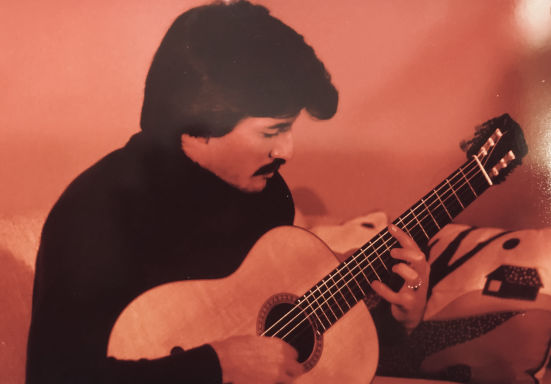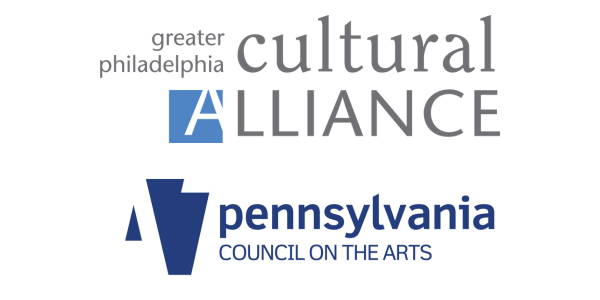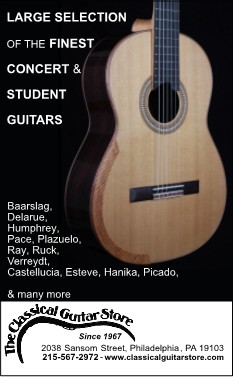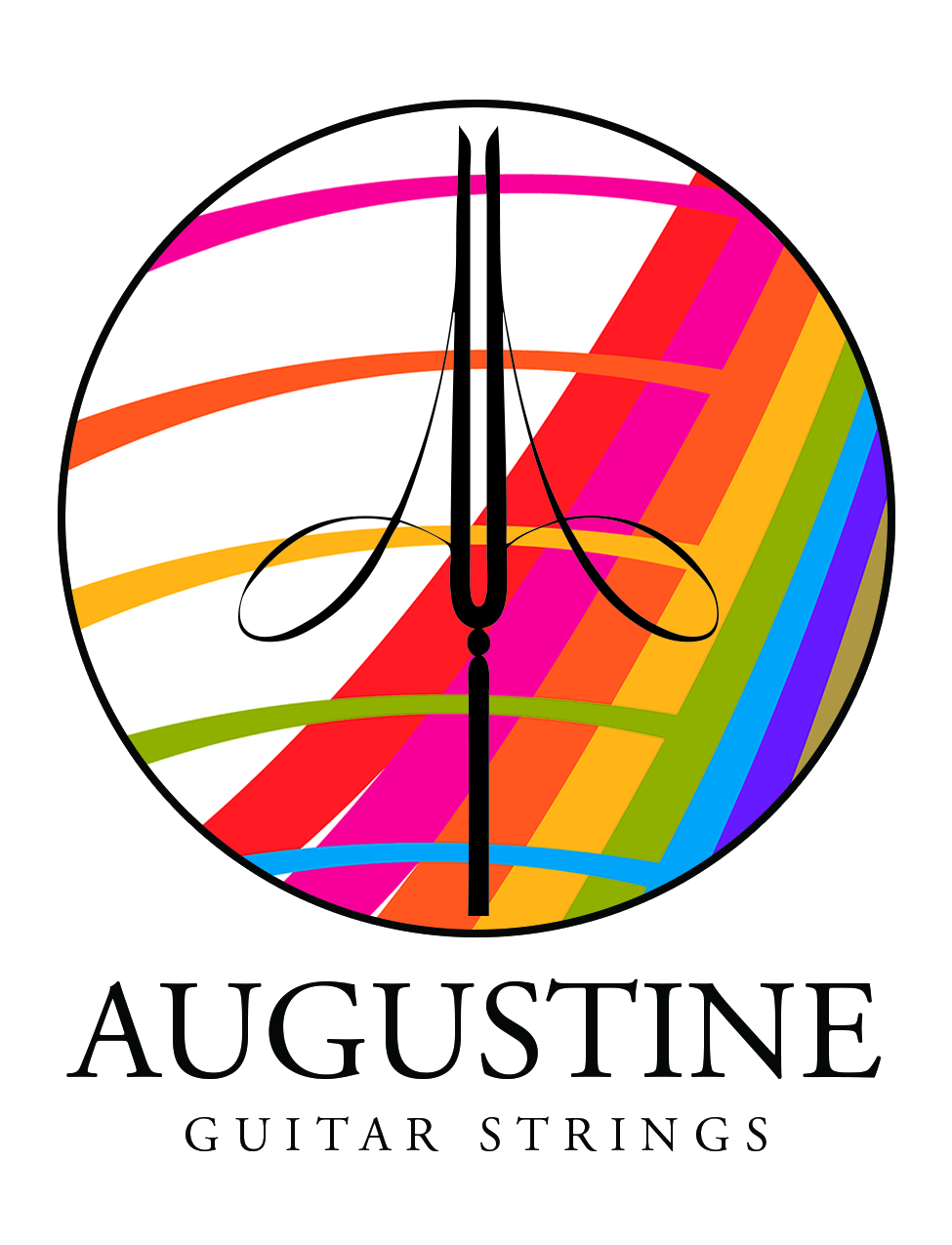Recently we started thinking about highlighting some of our members who have expressed interest in telling the stories of their life-long musical journey. They all come from different walks of life. Some are professional classical guitarists, composers and teachers, others are life-long passionate learners, composers and performers of guitar music in its many forms, including classical guitar. In getting to know them and in talking to them over the years at PCGS’ concerts we found their stories inspiring and worth sharing with others in our community. We hope you will enjoy them as much as we did.

We recently sat down with Gregg Tashker, long time PCGS member, to talk about his musical journey and his guitar compositions and recordings. This is Gregg’s story.
Hi Gregg, why don’t we start with you telling us a little bit about your background and how you became interested in Music?
I grew up in Bronx, NY during the 60’s and 70’s in a middleclass neighborhood and attended public schools, until going to RIT for an engineering degree in 1973. My time was split between interest in photography, music, sports, and academics. My parents were supportive on all fronts with emphasis on academics. My father was an educator and my mother was an office manager. I became interested in photography at about the age of 12, and had my own darkroom for developing B&W films and prints, and Color Slides. You may be thinking where would you have a darkroom in a NYC apartment? Right where you’d expect it to be…my closet. Since I was too young to have a job, and because photography was not an inexpensive hobby, I had to become entrepreneurial. I began taking pictures during class field trips and selling them to students, until at the age of 15, I got a part time job to support my endeavors. If you asked me what I wanted to do as a career at 6 years if age, I would have told you I would become a mathematician. So when the time came to select a career, I combined my interest in math and science with a hobby I enjoyed which led to my college degree in Photographic Engineering and an interesting career with DuPont where I had a diverse range of assignments.
About now, you’re probably wondering how this relates to music. My musical interests actually came earlier than Photography and is one that has been ever-present through my adult life. Nobody in my immediate family or close relatives played an instrument. Early influences came from a number of other places. My father bought the first High Fidelity KLH FM Radio in 1962. So we always had classical music and standards playing in our home. And about the same time transistors were being applied to electronics to make them compact and more reliable. The transistor radio were our generations Walkman. Apartment living doesn’t lend itself to spending time in it, and so we would walk around the neighborhood with our “Transistor Radios listening to the British Invasion, emerging American Rock and Roll, and Motown. Band like The Beatles, The Rolling Stones, etc. really caught my attention and gave me the desire to play an instrument.
My parents wanted their children to have broad cultural experience, and because we lived in NYC, we periodically attended concerts at the NY Philharmonic, and saw performances of the NY Ballet at Lincoln Center. I also was fortunate to see a number of Rock Music Concerts in my early teens. Two notable performance were Led Zeppelin in 1969 and Traffic in 1971. And I attended several seasons of The Young People’s Concerts led by the late Leonard Bernstein. The combination of these peformances kept me interested in music.
So what drove you to play guitar?
That an interesting questions. The first instrument that I wanted to play (at the age of seven) was the Drums. But as we lived in an apartment that was not going to be possible due to the noise and space requirements… so my parents asked me what instrument other I would like to play. I came back to them a week later and decided on Harp. That was also a no-go probably the cost and size and they must have been thinking there was no way I would stick with it. But I guess these small set-backs didn’t deter me. So a couple of months passed and I asked for a guitar, weekly until they complied. We were in a department store and I told my parents that I’d be looking at the toys, knowing full well that the music department was adjacent. When they came to pick me up, I headed straight to the music department and pointed to a guitar. They purchased this very inexpensive acoustic guitar with strings about a half inch above the fretboard, but I was determined. The following week, I started music lessons with a local teacher using the Alfred’s series of beginner books.
So how did you become interested in Classical Guitar?
Well I started guitar lessons at the age of 8, and by 10 I was rapidly progressing through the Alfred Guitar Method books, and told my parent that I felt the instructor wasn’t teaching me enough and wanted to learn more. You see I wanted to play in a band with an electric guitar. So my parent actually were quite good about this, and purchased an electric guitar and amplifier. It was a Kay electric hollow body archtop, with the F-holes. And so with this, we started a neighborhood band. We wrote some songs and got to play on stage on Assembly Day. It was a pretty big deal to play on stage, in front of the entire school. We wore rock costumes instead of a white shirt and tie required for Assembly. We were famous for a day. All kidding aside, it was reinforcing and one of my bandmates plays in a blues band on weekends.
So continuing with the story, my father found a good music school called Bronx House which taught a range of instruments and also required that you attend music theory for a half day every weekend. So we get to the school for my first lesson, with my new Electric Guitar; and my parent and I are told that “you can’t play classical guitar with that kind of instrument”. My parents become flush, and there is a long pause; and then they ask what is needed. At 10 yrs. of age, I don’t really know if they’re going to buy yet another instrument but I’m anxious to learn. I convince my parents that I am committed, and that week we purchased a Goya nylon string guitar from Sam Ash Music store. I proceed to take classical guitar lessons for the next 5 years. In 1975, while on winter break from College, I bought my next classical guitar, a Martin N20, which ultimately becomes very famous in the hands of Willie Nelson. I played that instrument for about 25 years while adding a couple more.
Who are some of the guitarist who have influenced you’re playing?
Well there have been many different genres of guitar that I became interested in over the years. In the classical guitar genre, Julian Bream was, and still is a standout for me. His playing has excellent phrasing, great dynamic contrasts and deep emotion which continue to stand as a benchmark for me. A second early classical guitar influence was a less well known Spanish Guitarist Renata Tarraga. In 1980 I had a chance to see Alexandre La Goya play in an under-attended show at the 92nd St Y. His playing was really captivating and I purchased some of his records including duets with his wife Ida Presti.
Rock guitar influences were Jimmy Page, Carlos Santana, and David Gilmour each offering a slightly different approach to playing, but all silky smooth with great creativity.
What were the circumstances that drove you to play Acoustic Fingerstyle Guitar and were there any guitarist that influenced you?
First of all, let me comment that I would probably not be playing fingerstyle guitar, had I not taken classical guitar lessons, and you can probably hear that influence in my compositions. The discipline and structure of learning certainly make it possible to play proficiently in this genre.
As I look backwards, my musical interest in guitar have expanded over time, from Rock, to Classical then on to Bluegrass, Jazz, Slack-Key and Fingerstyle. In the late 70’s fingerstyle guitar was emerging. Much of it was played on New Age radio stations. I found this style to be so different and compelling. A few of the artist that really caught my attention were on the Windham Hill Music Label. Michael Hedges dynamic playing really changed the landscape for fingerstyle guitar. His “Aerial Boundaries” record was groundbreaking. Anybody who plays this genre is familiar with Hedges, The other notable person was William Ackerman founder of the Windham Hill Label. His approach was different, almost transportive, simple yet captivating, with nice harmonic structure. As I became more familiar with this genre, I learned much that much of this music was played in alternate tunings, and when I could find their music it had to be played in tablature form. So I taught myself to read tablature.
During the same period Leo Kottke and Joni Mitchell caught my attention. Both played 12 string guitar. Leo played very interesting sounding fingerstyle on the 12-string, while Joni played in a range of alternate tunings in her folk-rock style. In 1975 I was gifted a beautiful handmade LoPrinzi 12 string guitar. I purchase a Joni Mitchell songbook and learned some alternate tunings through her music and played classical guitar on the 12-string just to make things interesting. No nails were involved in that practice.
In the early 80’s I began listening to a lot of Jazz music and Earl Klugh caught my attention because he was playing jazz on a classical guitar and had obviously been classically trained. I failed to mention earlier that I saw the great Charlie Byrd, Barney Kessel and Herb Ellis play jazz guitar at Carnegie Hall in 1969. I left with my head shaking as I couldn’t believe what I had just seen and heard. I realized there was so much more to learn. Byrd played on a classical guitar while Kessel and Ellis played hollow-body electrics. After that concert, I learned to play Classical Jazz by Byrd, which I used as an audition piece to a music school.
My wife and I frequently vacationed in Hawaii and I became very interested In Slack Key guitar. We had the good fortune to hear a number of really good Hawaiian players. While in the Island’s, I picked up a couple of books with a variety of composers. They were all in alternate tunings and I slowly learned to play Slack-key Guitar.
An increasing number of fingerstyle players seemed to be emerging over the next 20 years and I was actively buying their CD’s. Then around 2000 I was listening to an interview on NPR with an Australian Guitarist named Tommy Emmanuel. I was awestruck by his talent. You couldn’t find his music in the US, so I ordered his CD from Australia and attended his first USA concert tour a couple of years later. I found a songbook he had published which include all the tracks from his “Only” album and I taught myself to play a number of them.
Do you play any other instrument?
I entered a public JHS where I was required to play an instrument in Band or Orchestra. I wanted to play flute because I heard this unique style of flute playing by Ian Anderson in the Rock group Jethro Tull. When I got to band class I requested to play the flute. I was politely told that only girls can play the flute unless I was taking private lessons. So it was suggested to me that I should learn Oboe since the fingering are essentially the same. So over the next 6 years I played 1st Oboe in Band and Orchestra. I gave it up due to time constraints when I entered college.
When did you get interested in composing music?
Well I suppose I there were a number of factors and it’s a little convoluted. Over the years I have composed a few pieces and always had a reasonable ear to music improvise while playing along with music on the radio. Nothing substantial, but just something I would do periodically.
And my wife and I had a group of close friend that would come to the house and look forward to singing a wide range of popular music, and I’d provide the accompaniment on acoustic guitar. During those evenings I would also play fingerstyle acoustic and classical guitar. They were encouraging and would comment that I should play out and record some of this music.
In 2019 I went to a Tommy Emmanuel concert at the Grand Opera House in Wilmington, Delaware. And by chance I saw a colleague of mine sitting in the audience prior to the concert. Neither of us were aware that the other played guitar, let-alone fingerstyle. He shared that he was working on releasing a CD of his original music. We agreed to get together for a guitar session at his home where, we took turns playing and I saw his studio. We learned that our approach to fingerstyle was different but compatible. This was the pivotal event that stoked the fire. I asked if I could compose something that we might turn into duet, and get together in a week. I put pressure on myself to take concrete action. The piece was composed in CGDGBC tuning (used in a Hedges composition). So that is how I really got started with strong intention to continue composing. At completion we titled the song “Plenty of Light” and recorded it in an iPhone. Then the Pandemic came and that had to be put on the back burner. But my good friend encouraged me to keep writing and reminded me that there is an infinite amount of music out there.
Why did you choose to compose on acoustic guitar?
I suppose there are a number of reasons. Playing fingerstyle allow for a little more freedom composition-wise. And it is possible to play in far more tunings which extends the tonal range and tonal palette of the instrument.
With all the genres I have tried, I have built a library of over thirty tunings. I often find the new tuning inspirational and it helps me to discover and compose new music.
In general acoustic guitars are available with a wider assortment of top and tonewoods, shape, and scale-length. And you can find instruments with 12, 13 or 14 frets clear to the body, plus a wide range of string materials and gauges. All these have an impact on tone and playability. So I have variety of instruments to choose from and can select a guitar that I feel is suited for that piece of music. My instruments include top woods with Sitka Spruce, Red Cedar, Adirondack Spruce and Port Orford Cedar. Back and sides are Brazilian Rosewood, Indian Rosewood, Imbuia, Myrtlewood and Koa.
At the end of the musical ideas come more easily to this genre. I’m happy to discuss acoustic guitars with any member that has an interest.
What is your composing process or approach?
I retired in 2014 and decided that I wanted to get more involved with Guitar both in playing and potentially composing, so I joined PCGS and WCGS within weeks of one another. During that first year I learned that Kevin Cope studied composition. I had a couple of short conversations with Kevin. Following that I read some articles on composing and dusted up on music theory which was quite helpful. I also read a couple of books on composition.
While reading the books I reflected on the few pieces I’d written over the years. They typically showed up as phrases or riffs that were either became more fully developed or sat on music paper. So I decided to set a few simple objectives. 1) I would write a song in most/all of the alternate tunings in my library. 2) I wanted at a portion of the songs to be atmospheric. 3) I would encourage myself to use some of the fingerstyle techniques, i.e., Neck Bends, Harmonic Slaps 4) I would explore the use of amplification and guitar pedals in creating a sound that resonated with me.
When sitting down to compose in alternate tunings (not drop D), you recognize quickly that you don’t know the layout of the fingerboard nor even common major chord fingerings. So my approach has been strictly organic. Following tuning I try to find a phrase or two that captures my attention. Once that is done, I find the next sequence that feels additive and so on. I’m conscious to try to build phrases at the beginning that catch the listener’s attention and set the mood for the piece. I build the chord sequence first and then add the melody as I find this easier. I consciously consider whether I want the Melody to sit in the basses or trebles. Then I will build an A part and B part that (to my ear) fit together and find a chorus between parts. I may not always stick to that convention, but thus far that has been my general approach. I rarely finish a piece in one sitting, and when I think I’m done, I’ll play the piece and make modifications for a couple of weeks.
As I’m composing I let the mood take me in a direction and midway through writing, I’m thinking about an appropriate title. I find this a help to continuing the development of the balance if the piece.
I use an app called Music Memo on my iPhone to record the composition initially. On playback this app displays the chord sequence created. I then compare the chords against the chord wheel. From there I determine the key I actually composed in, and also look for other related chords that I could consider. At that point if I want to use them, then I have to write out the notes and find them on the fingerboard.
I also have Future objective to compose in a more traditional manner, using standard tuning with a predefined key along with a specific intention fir the composition.
Can you say something about a few of your composition and how you find your inspiration?
Dawn of the Day – was composed with a beautiful Goodall Grand Concert guitar made with Myrtlewood back and sides and a Port Orford Cedar top. These woods only grow in the small area of Northern California and Southern Oregon. I was fortunate to visit John Goodall’s workshop to play a variety of instruments. In 2021, I decide that I needed to add a pick-up to the guitar because I was composing with amplification and effects. I had a K&K pickup installed because they require minimal modification to the instrument and they do a good job of preserving guitars tone. After installation the luthier plugged into his amp to test it, and I saw his mouth drop. I couldn’t wait to get home and play it. I tuned it to B F# B E A E. I was curious to hear how the guitar would sound in this tuning with the lower bass notes. Well the ideas came pretty quickly and I wrote the song in two sessions. It was dark and moody and I decided on its current title. I added a beautiful photo to the cover art which I shot during dawn at a fog covered lake in New Zealand which I felt matches the mood of the piece.
Transcendental Journey – This was the third piece that I composed. At the time I had an idea, to compose something that would create a soundscape. I decided to use harmonic slaps followed by gentle guitar tapping and then individual harmonics to set the mood in the opening section. Then I wanted to create a section with some flow and movement. At completion I was thinking if a name for the piece and the notion of a journey came to me. After further thought I came up with the idea of “Transcendental Journey”. In Transcendental Meditation; transcending is the individual experience of having no mantra/or thought. The individual is only aware that they have transcended after they recognize that they have had no thought, And so I adapted this in the naming of the song.
You’re My Inspiration – I dedicated this song to my wife. In 2020 I went through a critical medical situation just as we were entering the pandemic. My recovery has been very long and is still not over. My wife went through a lot as a result, but steadfastly stood by my side and cared for me every step of the way. For the cover art I chose a photograph of her standing on a beach in Kapalua, HI which is one of our favorite vacation destinations. The song was composed in DADGAD tuning.
I just want to mention that I have two more compositions that I will be releasing in the near future. One is called “Your Eyes” which I wrote for my daughter’s wedding. And I’m currently working on a piece titled “They Grow Up Too Fast” which I will dedicate to my kids and grandchildren. They don’t know it yet but I guess upon reading this, it will be a surprise.
You mentioned that you use amplification and effects during composing? Can you expand upon this?
I find the amplification and effects assist me in the creative process to find the sound/mood I’m looking for. I use three different reverb pedals either individually or in combination. Two of the pedals include delay as well. All have a large range of adjustment. I can also adjust the sustain. I can tailor the sound for each instrument and tuning as needed.
I also have a looping pedal which I have yet to compose with, but it’s a future objective.
I use a preamp some of the time and in particular with the K&K pick-ups since they are passive and I can reduce the noise floor while simultaneously adjusting equalization.
I primarily use a California Blonde amplifier as I’ve yet to find one that preserves the instrument sound as well.
What is your recording process and do you use the effects pedals in your recording?
I use three tracks when recording. Track one is an instrument cable from the guitar. Tracks two is a small diaphragm condenser microphone pointed somewhere near where the neck joins the body, around the 14th fret. The third track is a large diaphragm condenser microphone aimed at the body but below the bridge and typically the lower portion of the body. All tracks are fed into an audio interface. The interface is connected via USB-C to a PC. I use Avid Protools as my DAW and monitor everything through a good set of headphones. I mix all the recording myself in Protools. I master using AI based web Mastering, I trialed 4 different companies and selected eMaster as the one that sounded best for my recording,
Using effect pedals are typically not recommended during recording, but I have not found a reverb plug-in for post-production that creates the tone I am looking for. I often insert one reverb pedal in the instrument track to assist. Then I use reverb plug-ins during mixing on the microphone tracks. During mixing I’ll also add equalization and compression to each track
What were the drivers behind your recording and publishing your music?
The idea of recording came to me really after I had composed a number of songs. The iPhone recordings weren’t cutting it sonically and I wanted something better. I spent some time researching what was available and then jumped in with both feet. Recording well is quite a learning process. Protools is a comprehensive DAW but is time consuming to learn. Finding proper microphone positions and preamp settings is an iterative and time consuming process. But the end results are worth the effort. Learning to mix your recording is another process that takes time and patience. You develop an ear for it. And the benefit of recording yourself is that it speeds identification of issues in playing that can be improved.
The notion to publish music came after I recorded a few songs and with continual encouragement from friends. It’s easy to have self-doubt. And I felt at this stage of my life that if I was going to the effort to compose and record; that the music should be shared. Music is universal and hopefully some receive joy from listening to it.
Do you perform music routinely?
I performed more in my youth and opportunistically in my adult working life. I’ll expound upon a few situation in a moment.
In my youth I played routinely in a couple of bands. And while taking Classical guitar lessons I performed periodically in salons. I learned that I was less comfortable playing on my own than with others, so throughout my adult life I played with others or for a smaller groups of friends.
During my working years, between family commitments, coaching sports and globetrotting for work, it was hard to find the time to play as much as I’d like to let alone perform. But guitar was my pacifier and I played it often even if for 30 minutes. And when I traveled alone, of an evening I would hunt for a local music store where I had many encounters with like-minded individual and made for a nice evening.
In 2003/4 I was doing strategic development project for business growth in China and was often there for two or three weeks at a time. One weekend I decided to go to a section of Shanghai known for music stores with both eastern and western instruments. I ended my day at a large music store. I was playing classical guitar in the shop for 15-20 minutes and drew a crowd of customer and employees. None of them spoke English, but we ended up swapping songs for the next 45 minutes. Great experience and made my weekend.
In the late 90’s I served as Relationship Manager for DuPont and was focused on developing product technology for a large corporation. We met monthly and along the way they learned of my musical interests. We had quarterly global meeting in various locations. One such meeting was in Singapore. About thirty minutes prior to the end of the3 day meeting, my counterpart turned to me and said we need to leave now. I was hesitant to do so but after a short private discussion learned that we were the entertainment for the evening. They booked a bar for the evening and I was part of an impromptu band entertaining for a few hours. It doesn’t get much better than playing with your customers. The key is that music is universal, embrace it because you never know where that gift will take you,
Final thoughts – In 2019 along with the idea of composing music, I was encourage by other friend who played to take a step out and test the waters at open mics. So I did so playing weekly for several months. It was disarming at first, but I became more comfortable with time. Unfortunately the pandemic and my health issue have prevented me from doing more of that. But I encourage other with an interest to push themselves to do the same.
Where can listeners find your music?
My music can be found at my website greggtashkerguitar.com. On the site it is available to listen and purchase. Listeners can contact me through the website as well.
I have a facebook page Gregg Tashker Guitar.
And music is available on all popular streaming platforms. Just search by my name “Gregg Tashker” on all streaming platforms and you should be able to find all of my compositions.
I will continue to compose and release music into the future.
Please do keep us posted and thank you for sharing your life-long journey with all of us!






Comments are closed.